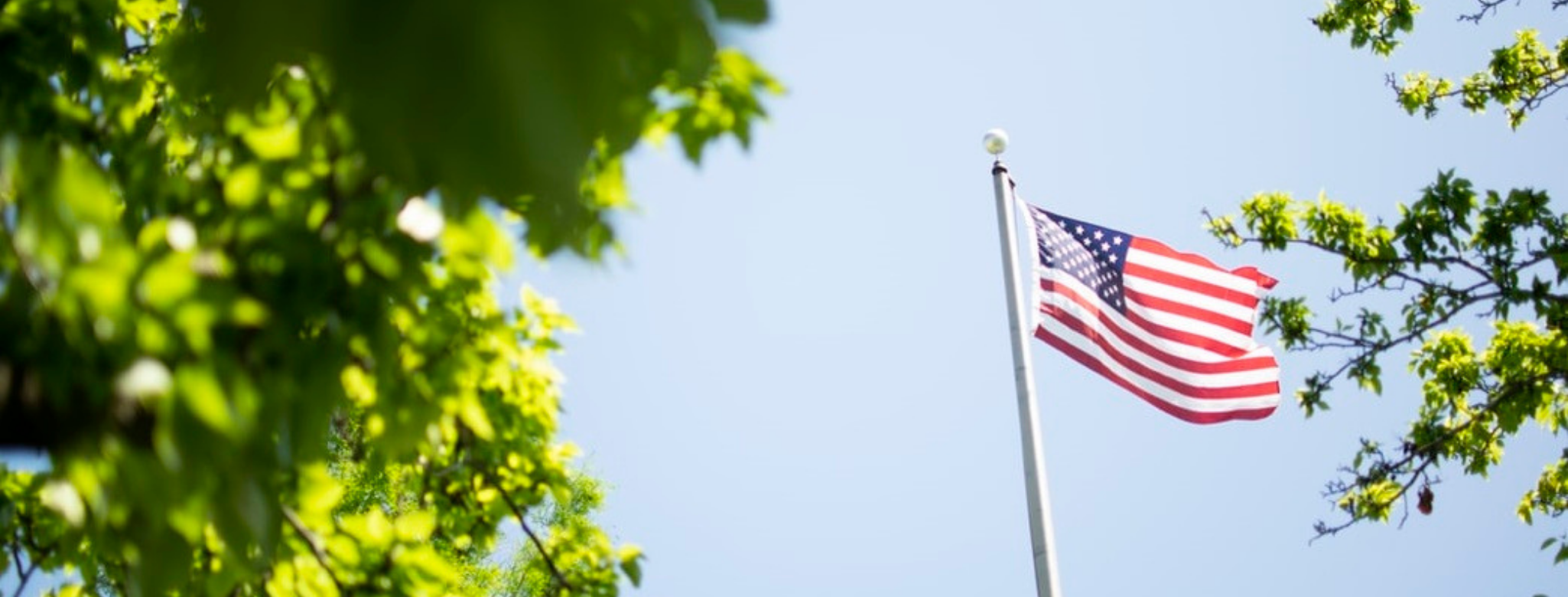What You Need To Know About Flag Size & Flagpole Height
Posted by Hayley Adams on Jul 8th 2021
Some of the most popular questions that come across when preparing to invest in a flag and flagpole set is what size flag to purchase and what kind of flagpole do I need?
To help visualize the most common size flag, try your wingspan. The average measurement of your arms spread apart should be around 5 to 6 feet. The distance from the midpoint of your chest should also help. This will be half of the measurement before at 2 to 3 feet.
You’ll see 3 x 5 flags everywhere. US flag size and usually mounted on most flagpoles. So for visualization purposes, the 3 x 5 flags are half a wingspan high and a full wingspan long.
Understand Flagpole Height
Keeping the 3 x 5 flag in mind, let’s now think about the height of your flagpole.
In-ground poles standing at least 15ft will support this size flag. However, sometimes upgrading to a larger flag is the best option. Making sure you have a large enough flag compared to your flagpole will really wow bypassers and ensure maximum curb appeal! This typically is for most residential flagpoles and looks good with a 3 x 5 flag size as well.
A good rule of thumb is, the taller the flagpole, the larger the flag needs to be. There’s an easy math equation that helps with above-ground height. Take the above-ground height and multiply it by 20 percent. You’ll come to an answer determining the size of the width of the flag.
Flag Materials
Flags are made out of all kinds of materials. Some of the most common options today are Nylon, Polyester, and Cotton. Due to its price point, longevity, and versatility, nylon is typically the most popular flag material on the market. It’s suitable for a range of uses and environments. Nylon handles rain well, is lighter in weight, holds its color well, and dries fast really fast.
Generally speaking, a flag’s lifespan is pretty hard to predict. There are many factors including flag quality, wind, weather, and sunlight. But there are several things you can do to help expand your flag's lifespan. Take a look at this helpful guide for some tips and tricks!
Other Things To Consider
All flags and flagpoles are not the same. There are a few factors you’ll need to consider before buying either like location and common weather conditions.
Areas with mountains, desert plains, or coastal weathering need a flagpole that can take on the strong wind. Big gusts can be worrisome in these areas of the world. Usually, in situations like this, a sturdier pole like our High Wind Flagpole is necessary to take on those major wind conditions. Along with a tougher flag material like our Extra Tough and Ultra Tough options.
For places that do not often have strong gusts of wind, residential flagpoles are going to be your best bet! Depending on their height, these flagpoles can support a flag up to 5 by 8 feet. But a good thing to note is that it’s recommended that anyone worried about pole safety should fly a smaller flag, especially in those windier areas.
And there you have it. Now that you know the ins and outs of flagpole height and flag size you’re off to the races!

